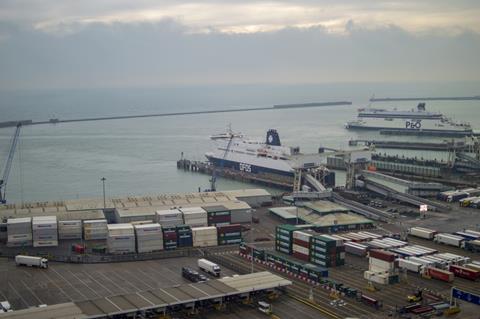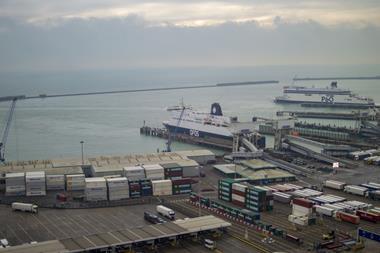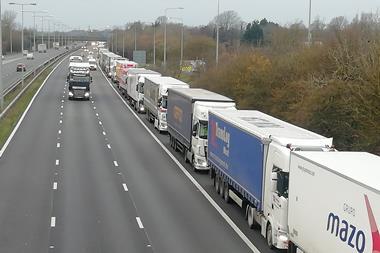
As our then Brexit secretary famously reminded us in 2018, we are ‘particularly reliant’ on the Dover-Calais crossing for the flow of goods in and out of the UK. So when P&O made its sudden, cryptic, announcement last week that all its ferries must stay in port – then proceeded to sack its entire workforce – questions were immediately asked about implications for food supplies.
P&O accounts for a third of capacity on the Dover-Calais route. But so far, even after more than a week, the fresh and frozen food supply chain has only experienced minor delays and inconvenience. In fact, compared with 8,000 lorry drivers stuck on a Kent airfield before Christmas 2020 and the numerous Brexit dramas over the past three years, this feels very much like a situation hauliers and supply chain planners can take in their stride.
It is more challenging for businesses that are reliant on crossing the Irish Sea, especially on the Cairnryan to Larne route. This is a vitally important crossing for Northern Irish farming supplying the UK mainland, and for supermarkets dispatching goods from English and Scottish distribution centres to replenish shelves in Northern Ireland stores. It is reassuring to see Stena Line adding capacity to that route.
So while we shouldn’t be alarmed, we can’t be complacent either. A pattern is emerging. It is getting harder and more expensive to bring goods into the UK, and fresh and frozen food is no exception.
This is driven mainly by major global forces – a war in Ukraine, a pandemic and a restructuring of the UK’s global trade position all occurring more or less at once. Moving goods by ship, road or air is exponentially more expensive today than three years ago. Having been a minor consideration for food businesses looking to grow, cost to supply is now a major barrier.
But cost is only one of the factors discouraging the export of food products from the EU into the UK. There is also the hassle factor. Three years of crises (and a lot of talk about the crises) has left people outside the UK with the impression that it’s not worth the risk, and there is a noticeable increase in the number of businesses unwilling to do so.
This may seem trivial, but at a time when production is constrained, and supply chain assets – such as trucks and drivers, ferry space and warehouse capacity – are in major demand across Europe, we don’t want to be the destination no one wants to go to.
Of all the crises affecting the food supply chain, the delivery of Brexit has been the most frustrating and we are not done yet. The biggest inconveniences for food imports – the requirement for vet checks and food border inspections – only really get started in July. Lots of hard work is going into trying to ensure the UK enforces these rules with as light a touch as possible. But unfortunately, that is unlikely to be enough to counter the bad press. Bad reputations are quick to gain and slow to lose.
We are urging ministers not to make this situation worse. They still have the option to delay the next raft of Brexit burdens on food imports, and ideally find a way back to agreement on greater alignment/equivalence between UK and EU food standards. This is the only solution that would genuinely reduce pressure on food businesses and reduce the inevitable cost impact for consumers.
So while the outcomes of the P&O drama remain to be seen, the ongoing threat of the UK’s developing reputation for crises and hassle as an export destination must be recognised and addressed by government and industry together – and fast.



















No comments yet